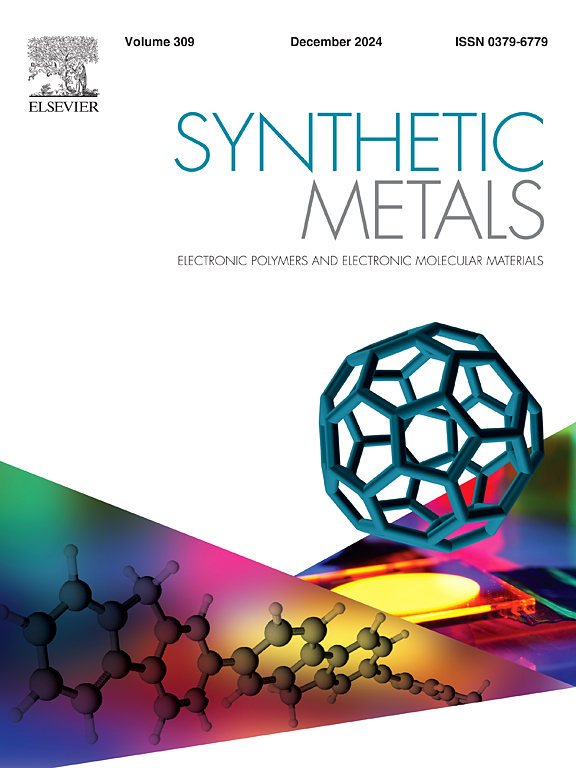Improving efficiency and stability of inverted perovskite solar cells using C60/PTCDA binary electron transport layer
IF 4
3区 材料科学
Q2 MATERIALS SCIENCE, MULTIDISCIPLINARY
引用次数: 0
Abstract
Herein, we explored the application of perylenetetracarboxylic dianhydride (PTCDA) electron transport material for inverted perovskite solar cells (PSCs). We obtained a modest power conversion efficiency (PCE) of 15.0 % using PTCDA alone to form electron-transport layer (ETL) of p-i-n devices, whereas the combination of PCTDA with C60 within a binary ETL delivered PCE of 19.8 %. The improved efficiency reached with binary ETL can be attributed to its ability to facilitate charge transfer and passivate traps the surface of the perovskite layer thus reducing recombination losses at the absorber/ETL interface. Further insights were provided by IR s-SNOM microscopy, which revealed that the binary C60/PTCDA ETL has a highly uniform and homogeneous structure with low density of defects and pinholes, thus ensuring effective isolation of MAPbI3 and effective operation of PSCs. Moreover, the binary C60/PTCDA ETL improved the stability of PSCs under ambient conditions, so the devices exhibited no signs of degradation after 1000 h. These findings feature the potential of PTCDA as a promising organic component for designing engineered multicomponent ETLs for improving the performance and stability of PSCs.
利用C60/PTCDA二元电子传输层提高倒置钙钛矿太阳能电池的效率和稳定性
在此,我们探索了苝四羧酸二酐(PTCDA)电子传输材料在倒置钙钛矿太阳能电池(PSCs)中的应用。我们单独使用PTCDA形成p-i-n器件的电子传输层(ETL)获得了15.0 %的适度功率转换效率(PCE),而PCTDA与C60在二进制ETL中的组合提供了19.8 %的PCE。二元ETL的效率提高可归因于其促进电荷转移和钝化钙钛矿层表面的能力,从而减少了吸收剂/ETL界面的复合损失。红外s-SNOM显微镜进一步揭示了C60/PTCDA二元ETL具有高度均匀和均匀的结构,具有低密度的缺陷和针孔,从而保证了MAPbI3的有效分离和psc的有效操作。此外,二元C60/PTCDA ETL提高了psc在环境条件下的稳定性,因此在1000 h后器件没有退化迹象。这些发现表明,PTCDA作为一种有前途的有机成分,可用于设计工程化的多组分etl,以提高psc的性能和稳定性。
本文章由计算机程序翻译,如有差异,请以英文原文为准。
求助全文
约1分钟内获得全文
求助全文
来源期刊

Synthetic Metals
工程技术-材料科学:综合
CiteScore
8.30
自引率
4.50%
发文量
189
审稿时长
33 days
期刊介绍:
This journal is an international medium for the rapid publication of original research papers, short communications and subject reviews dealing with research on and applications of electronic polymers and electronic molecular materials including novel carbon architectures. These functional materials have the properties of metals, semiconductors or magnets and are distinguishable from elemental and alloy/binary metals, semiconductors and magnets.
 求助内容:
求助内容: 应助结果提醒方式:
应助结果提醒方式:


